東大塾長の山田です。
このページでは、「楕円」について解説します。
今回は楕円の方程式から,面積の公式と導出,接線の公式,媒介変数表示まですべて解説していきます。
ぜひ勉強の参考にしてください!
1. 楕円の定義と方程式
まずは楕円の定義と方程式について解説していきます。
1.1 楕円の定義
「楕円」というと,「円をつぶしたやつ」「円を引き伸ばしたもの」という認識かもしれませんが,数学的には楕円は次のように定義されています。
「2定点F,F’からの距離の和が一定である点Pの軌跡」を 楕円 という。
また,点F,F’を 焦点 という。
1.2 楕円の方程式[標準形]
まずは楕円の方程式と性質をまとめます。
楕円 \( \displaystyle \color{red}{ \frac{x^2}{a^2} + \frac{y^2}{b^2} = 1 } \) \( (a>b>0) \)[標準形]
- 中心:原点,長軸の長さ:\( 2a \),短軸の長さ:\( 2b \)
- 焦点:\( F(c, \ 0) \),\( F’(-c, \ 0) \) \( \displaystyle (c = \sqrt{a^2 – b^2}) \)
- 楕円は \( x \) 軸,\( y \) 軸,原点に関して対称
- 楕円上の任意の点Pから2つの焦点までの距離の和は一定 \( (PF + PF’ = 2a) \)
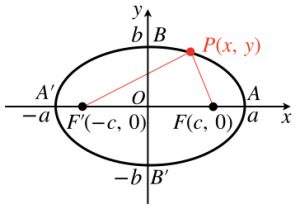
上図のように,\( F(c, \ 0) \),\( F’(-c, \ 0) \) を焦点とします。
楕円上の点を \( P(x, \ y) \) とすると,\( PF + PF’ = 2a \) より
\( \displaystyle \sqrt{(x-c)^2 + y^2} + \sqrt{(x+c)^2 + y^2} = 2a \)
\( \displaystyle ∴ \ \sqrt{(x+c)^2 + y^2} = 2a – \sqrt{(x-c)^2 + y^2} \)
両辺を2乗して
\( \displaystyle (x+c)^2 + y^2 = 4a^2 – 4a \sqrt{(x-c)^2 + y^2} + (x-c)^2 + y^2 \)
これを整理すると
\( \displaystyle a \sqrt{(x-c)^2 + y^2} = a^2 – cx \)
さらに両辺を2乗して整理すると
\( \displaystyle (a^2 – c^2)x^2 + a^2 y^2 = a^2 (a^2 – c^2) \)
\( a>c>0 \) であるから,\( \displaystyle \sqrt{a^2 – c^2} = b \) とおくと,\( a>b>0 \) であり
\( \displaystyle b^2x^2 + a^2y^2 = a^2b^2 \)
両辺を \( a^2 b^2 \) で割ると
\( \displaystyle \color{red}{ \frac{x^2}{a^2} + \frac{y^2}{b^2} = 1 } \cdots ① \)
が導かれます。
この①式を,楕円の方程式の 標準形 といいます。
楕円①と \( x \) 軸,\( y \) 軸の交点
\( A(a, \ 0) \),\( A’(-a, \ 0) \),\( B(0, \ b) \),\( B’(0, -b) \)
を楕円の 頂点 といい,線分AA’を 長軸,線分BB’を 短軸,長軸と短軸の交点(原点)を楕円の 中心 といいます。
また,\( \displaystyle \sqrt{a^2 – c^2} = b \) と \( c>0 \) より,\( \displaystyle \color{red}{ c = \sqrt{a^2 – b^2} } \) となります。
【例】
楕円 \( 9x^2 + 16y^2 = 144 \) の長軸・短軸の長さ,焦点を求めてみましょう。
楕円の式の両辺を144で割って,「=1」の形(標準形)に直すと
\( \displaystyle \color{red}{ \frac{x^2}{4^2} + \frac{y^2}{3^2} = 1 } \)
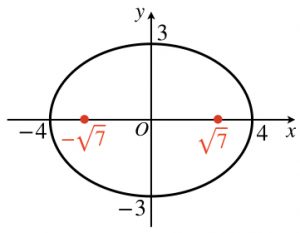
よって,頂点は
\( (4, \ 0) \),\( (-4, \ 0) \),\( (0, \ 3) \),\( (0, \ -3) \)
であるから
長軸の長さは8,短軸の長さは6
また,焦点は \( \displaystyle c = \sqrt{a^2 – b^2} \) より
\( \displaystyle \sqrt{16 – 9} = \sqrt{7} \)
したがって,焦点は2点 \( (\sqrt{7}, \ 0) \),\( (-\sqrt{7}, \ 0) \)
1.3 焦点がy軸上にある楕円
ここまで解説してきた標準形の楕円は横長,つまり焦点が \( x \) 軸上にありました。
縦長,つまり焦点が \( y \) 軸上にある楕円の方程式についても,上記と同様に考えると求めることができます。
焦点が \( y \) 軸上にある楕円 \( \displaystyle \color{red}{ \frac{x^2}{a^2} + \frac{y^2}{b^2} = 1 } \) \( (b>a>0) \)
- 中心:原点,長軸の長さ:\( 2b \),短軸の長さ:\( 2a \)
- 焦点:\( F(0, \ c) \),\( F’(0, \ -c) \) \( \displaystyle (c = \sqrt{b^2 – a^2}) \)
- 楕円は \( x \) 軸,\( y \) 軸,原点に関して対称
- 楕円上の任意の点Pから2つの焦点までの距離の和は一定 \( (PF + PF’ = 2b) \)
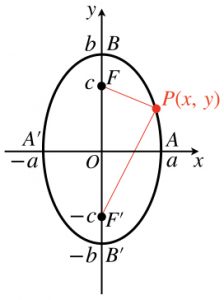
焦点が \( y \) 軸上にある楕円は,楕円の標準形①式の \( x \) と \( y \),\( a \) と \( b \) を入れ替えたものなので,①式の楕円を直線 \( y = x \) に関して対称移動したものとなります。
2. 楕円の面積の公式
楕円の面積の求め方について解説していきます。
2.1 楕円の面積の公式
楕円の面積の公式は次のようになります。
楕円 \( \displaystyle \frac{x^2}{a^2} + \frac{y^2}{b^2} = 1 \) \( (a>0, b>0) \) の面積 \( S \) は
\( \displaystyle \color{red}{ \large{ S = \pi ab } } \)
2.2 楕円の面積公式の導出(拡大・縮小)
楕円は「円を \( x \) 軸方向,または \( y \) 軸方向に拡大(縮小)したもの」です。
これを利用すると,楕円の面積公式は簡単に導出することができます!
例えば,縦横 \( b \) の正方形を,\( x \) 軸方向に \( \displaystyle \frac{a}{b} \) 倍したら,面積も \( \displaystyle \frac{a}{b} \) 倍になりますね。
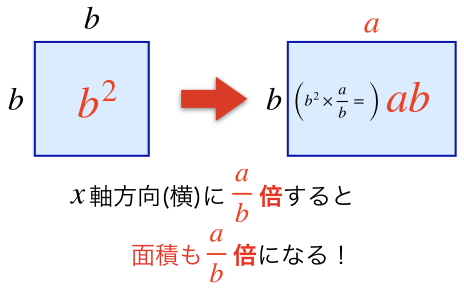
これと同様に,半径 \( b \) の円(\( x^2 + y^2 = b^2 \))を\( x \) 軸方向に \( \displaystyle \frac{a}{b} \) 倍したら,面積も \( \displaystyle \frac{a}{b} \) 倍になります。
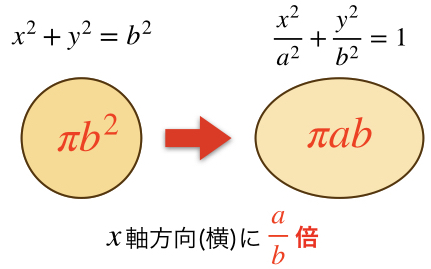
この考え方でいきます。
【証明①】
楕円 \( \displaystyle \frac{x^2}{a^2} + \frac{y^2}{b^2} = 1 \) の式について,両辺を \( b^2 \) 倍すると
\( \displaystyle \left( \frac{b}{a} \right)^2 x^2 + y^2 = b^2 \)
\( \displaystyle ∴ \ \frac{x^2}{\left( \frac{a}{b} \right)^2} + y^2 = b^2 \)
これは,円 \( x^2 + y^2 = b^2 \) を\( x \) 軸方向に \( \displaystyle \frac{a}{b} \) 倍したものである。
円 \( x^2 + y^2 = b^2 \) の面積 \( S’ \) は \( \pi b^2 \) で,図形を横に \( \displaystyle \frac{a}{b} \) 倍に拡大すると,面積も \( \displaystyle \frac{a}{b} \) 倍になるので,楕円の面積 \( S \) は
\( \displaystyle \color{red}{ S } = \pi b^2 \times \frac{a}{b} \color{red}{ = \pi ab } \)
2.3 楕円の面積公式の積分による導出
面積の導出方法として,積分で直接求める方法もあります。
これは数学Ⅲの積分で学習する 置換積分 を用いて導出します。
【証明②】
楕円 \( \displaystyle \frac{x^2}{a^2} + \frac{y^2}{b^2} = 1 \) の式を,\( y \) について解くと
\( \displaystyle y = \pm b \sqrt{1 – \frac{x^2}{a^2}} \)
(プラスの方は \( x \) 軸より上の部分の式,マイナスの方はは \( x \) 軸より下の部分の式)
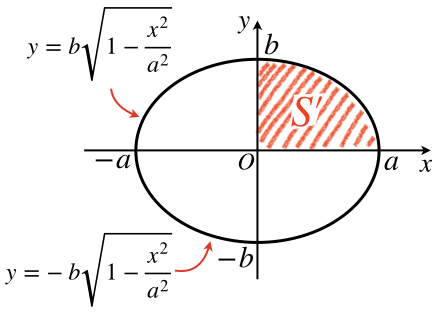
楕円は \( x \) 軸,\( y \) 軸に関して対称であるから,楕円の面積 \( S \) は,上の図の斜線部分の面積 \( S’ \) の4倍となる。
面積 \( S’ \) は
\( \displaystyle S’ = \int_{0}^{a} b \sqrt{1 – \frac{x^2}{a^2}} dx \)
\( x = a \sin \theta \) と置換すると,
\( \displaystyle \frac{dx}{d \theta} = a \cos \theta \)
\( ∴ \ \color{blue}{ dx = a \cos \theta d \theta } \)
\( x \) と \( \theta \) の対応は次の表のようになる。
| \( \large{ x } \) | \( \color{red}{ \large{ 0 \ \longrightarrow \ a } } \) |
| \( \large{ \theta } \) | \( \displaystyle \color{red}{ \large{ 0 \ \longrightarrow \ \frac{\pi}{2} } } \) |
区間 \( \displaystyle 0 ≦ \theta ≦ \frac{\pi}{2} \) において,\( \cos \theta ≧ 0 \) であるから
\( \begin{align}
\displaystyle \color{magenta}{ \sqrt{1 – \frac{x^2}{a^2}} } & = \sqrt{1 – \frac{a^2 \sin ^2 \theta}{a^2}} \\
\\
& = \sqrt{1 – \sin ^2 \theta} \\
\\
& \color{magenta}{ = \cos \theta }
\end{align} \)
よって
\( \begin{align}
\displaystyle S’ & = \int_{\color{red}{ 0 }}^{\color{red}{ a }} b \color{magenta}{ \sqrt{1 – \frac{x^2}{a^2}} } \color{blue}{ dx } \\
\\
& = \int_{\color{red}{ 0 }}^{\color{red}{ \frac{\pi}{2} }} b \cdot \color{magenta}{ \cos \theta } \cdot \color{blue}{ a \cos \theta d \theta } \\
\\
& = ab \int_{0}^{\frac{\pi}{2}} \cos ^2 \theta d \theta \\
\\
& = ab \int_{0}^{\frac{\pi}{2}} \frac{1 + \cos 2 \theta}{2} d \theta \\
\\
& = \frac{ab}{2} \left[ \theta + \frac{1}{2} \sin 2 \theta \right]_{0}^{\frac{\pi}{2}} \\
\\
& = \frac{\pi ab}{4}
\end{align} \)
したがって
\( \begin{align}
\displaystyle \color{red}{ S } & = 4 S’ \\
\\
& = 4 \times \frac{\pi ab}{4} \\
\\
& \color{red}{ = \pi ab }
\end{align} \)
途中の
\( \displaystyle \cos ^2 \theta = \frac{1 + \cos 2 \theta}{2} \)
の変形は,加法定理の2倍角の公式を使いました。
加法定理関係の公式が曖昧な人は,「三角関数の公式まとめ(加法定理・変換・合成)」の記事を必ずチェックしておきましょう。
3. 楕円の接線
続いて,楕円の接線の公式について解説していきます。
3.1 楕円の接線の公式
楕円 \( \displaystyle \frac{x^2}{a^2} + \frac{y^2}{b^2} = 1 \) 上の点 \( (x_1, \ y_1) \) における接線の方程式は
\( \displaystyle \color{red}{ \frac{x_1 x}{a^2} + \frac{y_1 y}{b^2} = 1 } \)
なぜこのような式になるのか,次のセクションで証明します。
証明は「判別式の利用」と「微分の利用(数Ⅲ)」の2通りで証明することができます。
3.2 楕円の接線公式の証明①(判別式の利用)
楕円と直線が接するということは,楕円と直線の連立方程式から \( x \) だけの2次方程式を導き,その方程式の判別式が \( D = 0 \) となればよいわけです。
これを利用して,接線の方程式を導きます。
【証明】
楕円 \( \displaystyle \frac{x^2}{a^2} + \frac{y^2}{b^2} = 1 \cdots ① \) の,傾き \( m \) の接線の方程式を
\( y = mx + n \cdots ② \)
とし,接点の座標を \( (x_1, \ y_1) \) とする。
②を①に代入して,\( x \) について整理すると
\( \displaystyle (b^2 + a^2 m^2) x^2 + 2a^2 mnx + a^2 n^2 – a^2 b^2 = 0 \cdots ③ \)
②の直線が①の放物線に接する条件は,③の2次方程式の判別式 \( D \) が \( D = 0 \) のときであるから
\( \displaystyle \frac{D}{4} = (a^2 mn)^2 –(b^2 + a^2 m^2) (a^2 n^2 – a^2 b^2) = 0 \)
\( \displaystyle ∴ \ a^2 b^4 + a^4 b^2 m^2 = a^2 b^2 n^2 \)
両辺を \( a^2 b^2 \) で割って
\( b^2 + a^2 m^2 = n^2 \cdots ④ \)
このとき,③の解(重解)は
\( \displaystyle x_1 = – \frac{a^2 mn}{b^2 + a^2 m^2} \)
これに④を代入すると
\( \displaystyle x_1 = – \frac{a^2 mn}{n^2} = – \frac{a^2 m}{n} \cdots ⑤ \)
⑤を②に代入すると
\( \begin{align}
\displaystyle y_1 & = mx_1 + n \\
\\
& = – \frac{a^2 m^2}{n} + n \\
\\
& = \frac{n^2 – a^2 m^2}{n}
\end{align} \)
これに④を代入すると
\( \displaystyle y_1=\frac{b^2}{n} \)
よって,\( y_1 \neq 0 \) のとき
\( \displaystyle n = \frac{b^2}{y_1} \)
これを⑤に代入すると
\( \displaystyle x_1 = – \frac{a^2 m y_1}{b^2} \)
\( \displaystyle ∴ \ m = – \frac{b^2 x_1}{a^2 y_1} \)
\( \displaystyle m = – \frac{b^2 x_1}{a^2 y_1} \),\( \displaystyle n = \frac{b^2}{y_1} \) を②に代入して
\( \displaystyle y = – \frac{b^2 x_1}{a^2 y_1} x + \frac{b^2}{y_1} \)
これを整理すると,接線の方程式は
\( \displaystyle \color{red}{ \frac{x_1 x}{a^2} + \frac{y_1 y}{b^2} = 1 } \)
さらに,\( y_1 = 0 \) のとき \( x_1 = \pm a \) であり,接線の方程式は \( x = \pm a \) となり,\( y_1 = 0 \) のときも成り立つ。
3.3 楕円の接線公式の証明②(微分の利用)
接線の公式は,数Ⅲで学習する微分を利用しても証明することができます。
【証明】
楕円 \( \displaystyle \frac{x^2}{a^2} + \frac{y^2}{b^2} = 1 \) の点 \( (x_1, \ y_1) \) における接線の方程式を求める。
この接線の方程式は
\( \color{red}{ y \ – y_1 = y’ (x \ – x_1) } \)
\( \displaystyle \frac{x^2}{a^2} + \frac{y^2}{b^2} = 1 \) の両辺を \( x \) について微分すると
\( \displaystyle \frac{2x}{a^2} + \frac{2y}{b^2} \cdot y’ = 0 \)
ゆえに,\( y \neq 0 \) のとき \( \displaystyle y’ = – \frac{b^2 x}{a^2 y} \)
よって,点 \( (x_1, \ y_1) \) における接線の方程式は,\( y_1 \neq 0 \) のとき
\( \displaystyle \color{red}{ y \ – y_1 = – \frac{b^2 x_1}{a^2 y_1} (x \ – x_1) } \)
両辺に \( \displaystyle \frac{y_1}{b^2} \) を掛けて
\( \displaystyle \frac{x_1 x}{a^2} + \frac{y_1 y}{b^2} = \frac{{x_1}^2}{a^2} + \frac{{y_1}^2}{b^2} \cdots ①\)
点 \( (x_1, \ y_1) \) は楕円上の点であるから
\( \displaystyle \frac{{x_1}^2}{a^2} + \frac{{y_1}^2}{b^2} = 1 \cdots ② \)
よって,①に②を代入して,接線の方程式は
\( \displaystyle \frac{x_1 x}{a^2} + \frac{y_1 y}{b^2} = 1 \)
さらに,\( y_1 = 0 \) のとき \( x_1 = \pm a \) であり,接線の方程式は \( x = \pm a \) となるので,\( y_1 = 0 \) のときも成り立つ。
したがって,楕円 \( \displaystyle \frac{x^2}{a^2} + \frac{y^2}{b^2} = 1 \) の点 \( (x_1, \ y_1) \) における接線の方程式は
\( \displaystyle \color{red}{ \frac{x_1 x}{a^2} + \frac{y_1 y}{b^2} = 1 } \)
4. 楕円の媒介変数表示
楕円 \( \displaystyle \frac{x^2}{a^2} + \frac{y^2}{b^2} = 1 \) の媒介変数表示は
\( \color{red}{ \begin{cases}
x = a \cos \theta \\
y = b \sin \theta
\end{cases} } \)
楕円の媒介変数表示は,「2. 楕円の面積の公式」の導出の考え方と同様にして,円を \( y \) 軸方向に拡大(縮小)したものと考えると簡単です。
楕円 \( \displaystyle \frac{x^2}{a^2} + \frac{y^2}{b^2} = 1 \) は,円 \( x^2 + y^2 = 1 \) を,\( y \) 軸方向に \( \displaystyle \frac{b}{a} \) 倍したものです。
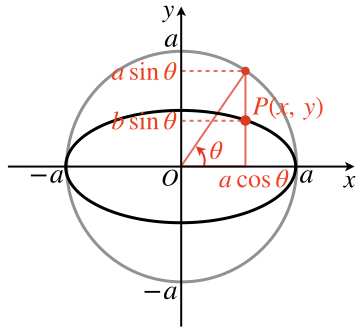
よって,円 \( x^2 + y^2 = 1 \) 上の点 \( Q(a \cos \theta, \ a \sin \theta) \) に対して,\( y \) 軸方向に \( \displaystyle \frac{b}{a} \) 倍した点を \( P(x, \ y) \) とすると
\( \begin{cases}
\color{red}{ x = a \cos \theta } \\
\displaystyle \color{red}{ y } = a \sin \theta \times \frac{b}{a} \color{red}{ = b \sin \theta }
\end{cases} \)
ある曲線の式の \( x \) と \( y \) を,それぞれ変数 \( t \) の関数として表すことを 媒介変数表示(またはパラメータ表示)といいます。
また,\( t \) を 媒介変数(またはパラメータ)といいます。
5. 楕円の知識まとめ
さいごに,今回の内容をもう一度整理します。
【楕円の方程式】
\( \displaystyle \color{red}{ \frac{x^2}{a^2} + \frac{y^2}{b^2} = 1 } \)
【楕円の面積公式】
\( \displaystyle \color{red}{ \large{ S = \pi ab } } \)
【楕円の接線公式】
\( \displaystyle \color{red}{ \frac{x_1 x}{a^2} + \frac{y_1 y}{b^2} = 1 } \)
【楕円の媒介変数表示】
\( \color{red}{ \begin{cases}
x = a \cos \theta \\
y = b \sin \theta
\end{cases} } \)
以上が楕円の解説です!


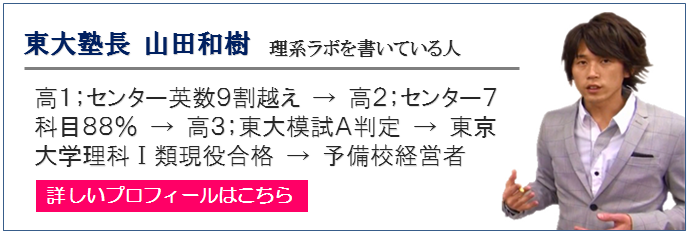


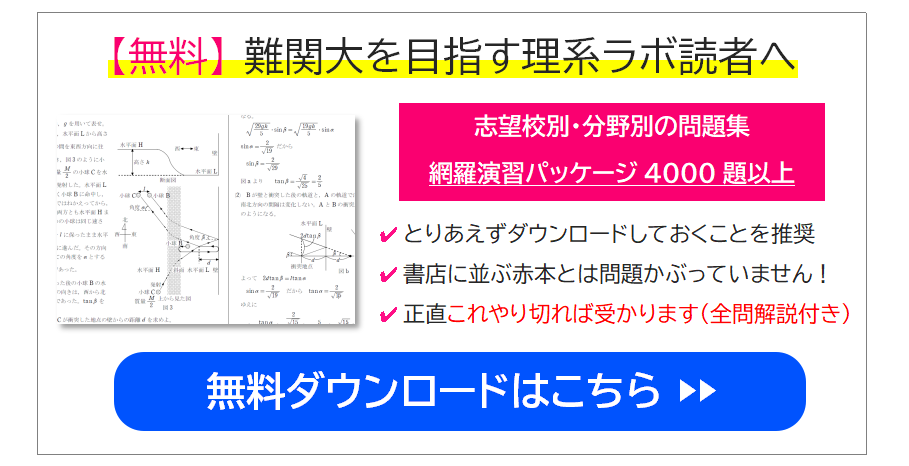





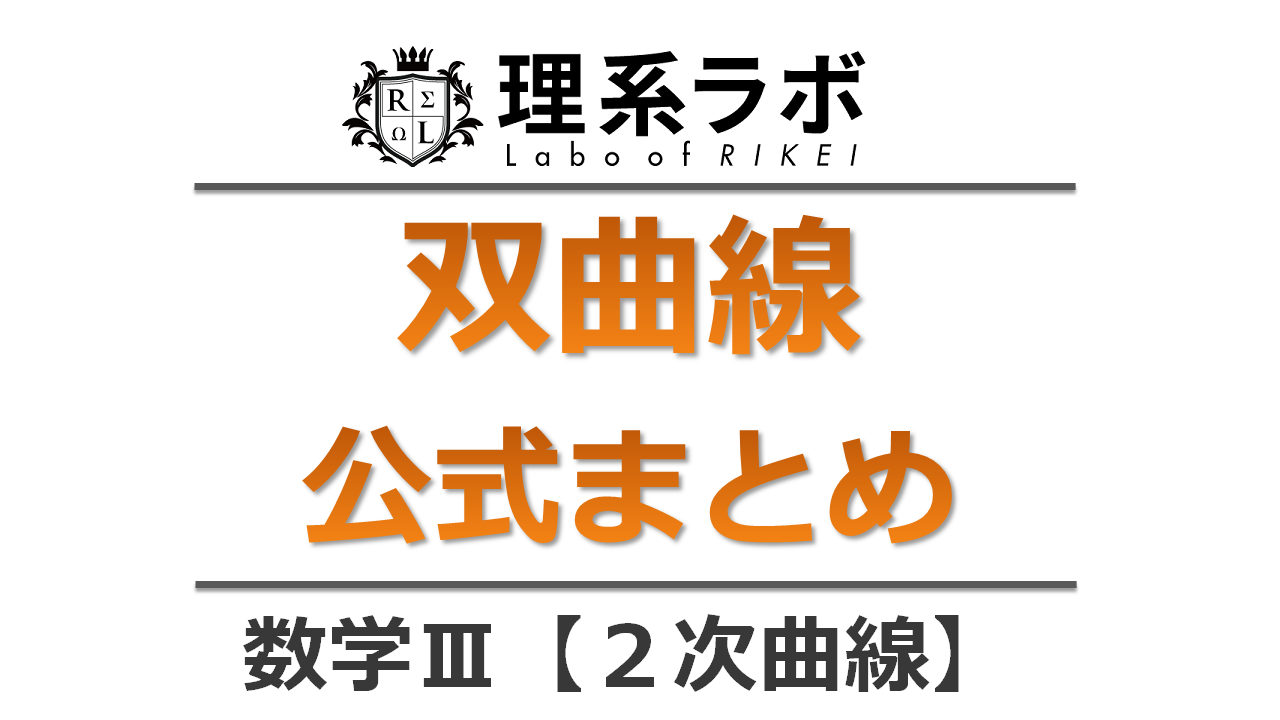
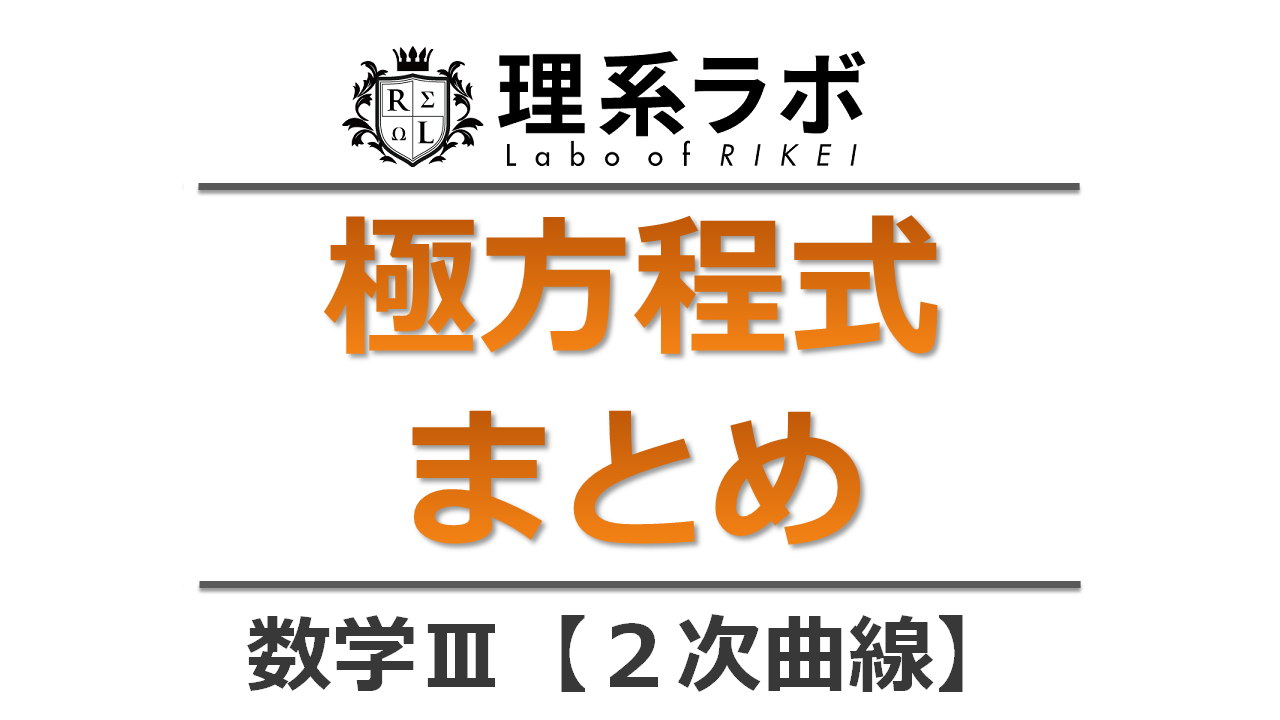




なんすかFF’って
焦点間の距離のことです